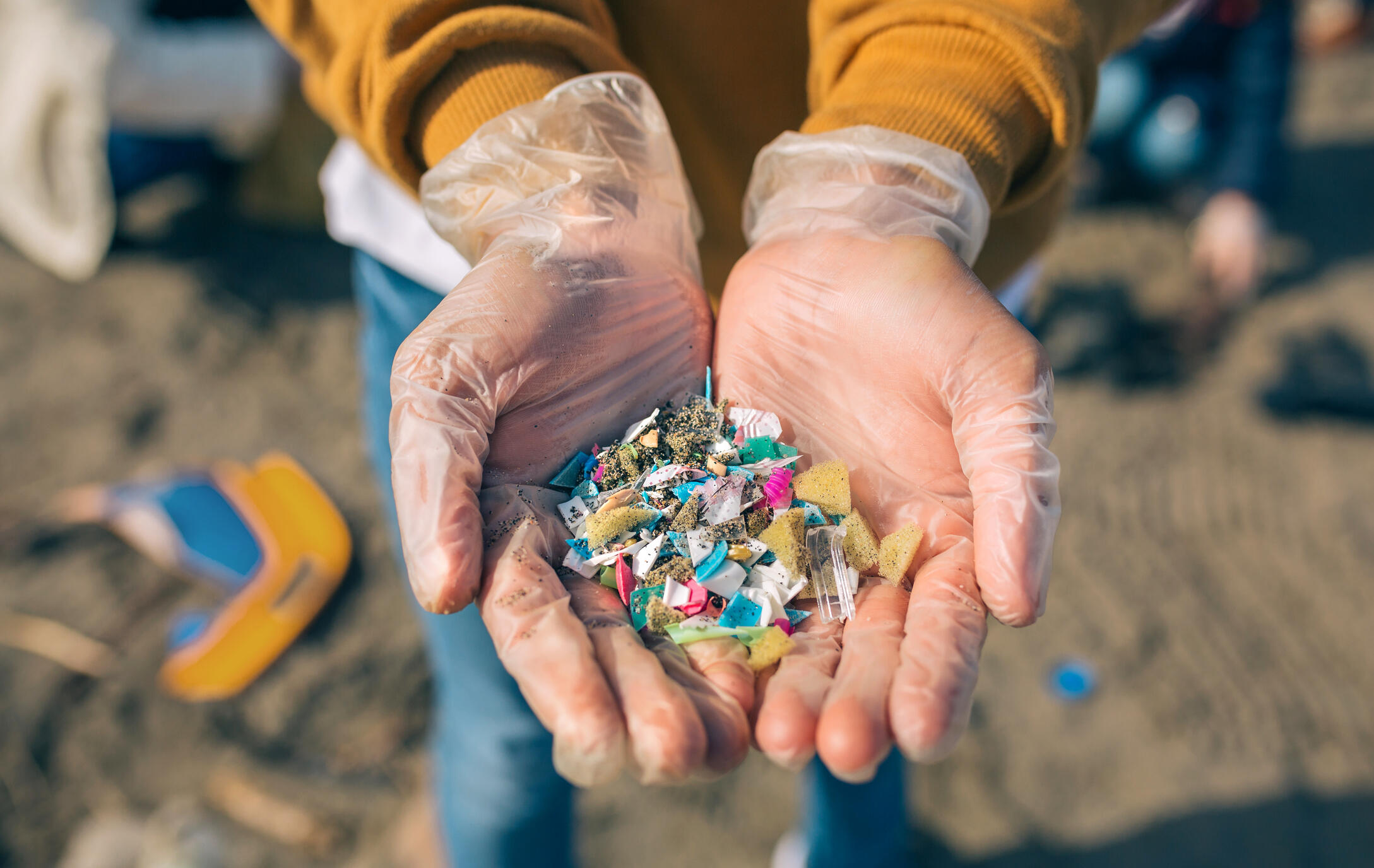
Mosquitoes and microplastics. Except from their alliterative link, what is their connection? Both are abundant. Both seem to find their way into obscure and unlikely places, often without our recognition. Both are causing detrimental effects on our planet. Is there a way we can stop this? Could it be possible they are influencing each other, and if so, is it for the better or for the worse? They are finding their way into many aspects of everyday life, should we be worried about the world’s deadliest animal being affected by what could become the next invisible and deadliest polluter?
Microplastics are found almost everywhere. From an ecological point of view, they are harming many diverse creatures and disrupting their role in different ecosystems, but have we thought about this from a public health point of view? There are many studies that recognise that microplastics are harming aquatic life, but what about us? Widespread plastic contamination of aquatic environments has resulted in increased ingestion of microplastics by many marine and freshwater biota, such as invertebrates and fish. These microscopic plastic polymers are transferred along the food chain, resulting in further exposure and potential threat to other marine organisms, such as decreasing their energy reserves. Microplastics being found in bottled water is likely the extent of our understanding of the direct impact on humans, but could it go deeper than this, and could it involve the interactions between different species? If so, is there any way of stopping the spread of microplastics? Will it just become normalised and part of the food chain if it carries on this way?
So, where do mosquitoes come into this? We know that mosquitoes can carry a multitude of diseases and transmit them to humans, but could they be ingesting microplastics? If this is the case, there is potential for the ingested microplastics to be interacting with infectious agents carried by the mosquito. Mosquitoes can transmit infections directly to humans, and there is potential for microplastics to be directed into humans in this way too. There are an array of questions and speculations that can result from this concept, yet meagre studies regarding this have been conducted. The ability for microplastics to be transferred ontogenically, which means the transfer through its life cycle, and the knowledge of microplastic abundance in terrestrial organisms has not been researched extensively, yet it is critical to understand the effect of this as many terrestrial organisms are of great importance in freshwater environments. Mosquitoes have a complicated life history consisting of aquatic stages, followed by a terrestrial stage when they are adults. There has only been one study(1) that has investigated ontogenic transference of microplastics in mosquitoes which hypothesised that the uptake of microplastics in larval stages will reduce survivability and development of adult mosquitoes. The results indicated that microplastics were readily ingested by the mosquitoes, and those microplastics were transferred from larval to adult stages, depending on the concentration and size of the microplastic. Many questions can arise from this single study, such as, do different types of microplastics have different ingestion rates and subsequent impacts? Will different species of mosquitoes respond differently to microplastic exposure? Does the immune system of the mosquito interact with the ingested microplastics? Could microplastics influence the level of resistance the mosquito shows to insecticide?
Given the recent evidence of ontogenic transfer of microplastics in mosquitoes, and the fact that the larval environment affects the adult phenotype, there is a need to explore the impact of microplastics on phenotypic traits affecting mosquito fitness aspects, such as how long the mosquito survives, its reproductive and vectorial capacity, just to name a few. The ultimate question is whether microplastics could be positively or negatively impacting mosquito fitness. If it is negatively affecting mosquito fitness, such that mosquitoes are less likely to survive or reproduce, is there a way we could harness microplastic ingestion as a form of vector control? An example of this could be through the utilisation of toxic baits. More worryingly, if it is positively affecting mosquito fitness, such that microplastics are enhancing mosquito ability to survive and transmit infections, is there a way to intervene to reduce microplastic abundance in the environment, thus prevent microplastic ingestion by mosquitoes. This concept could apply to a myriad of other organisms, such as pollinators, where the impact on their survival could be absolutely devastating.
Overall, us human beings respect and try to protect our environment with avidity. Especially during the current crisis of Covid-19, where we have observed many aspects of nature return to their original forms, we remain sanguine about our planet. There are many unknowns regarding the true interaction between microplastics and mosquitoes, and much more to uncover, but what we know for sure is that we are guests on this Earth, and it is our pernicious influences that have caused its decline. However, we can reverse these detrimental effects, and we must do what we can to ensure that the Earth, and all beings residing on it, are treated with care.
1.Al-Jaibachi R, Cuthbert RN, Callaghan A. Examining effects of ontogenic microplastic transference on Culex mosquito mortality and adult weight. Science of the Total Environment. 2019;651:871-6.
Lucy Wust is a student on LSTM's MSc. Tropical Disease Biology course. To read more blogs by Lucy, please check out her series Jumbo Snail:
Jumble Snail is a mixed blog regarding predominantly Tropical Science and the Arts. Jumble Snail’s approach to scientific topics does not consist of delving deep into the theoretical explanations for findings, but instead offers a more-rounded approach that considers the wider outcomes and potential developments of scientific findings. The approach to art topics consists of observations and interpretations from a personal view. I am inspired by the power the arts can have on scientific discovery and dissemination. I hope Jumble Snail promotes curiosity and inspires different ways of thinking within all these extraordinary inter-connecting fields. I will release a new blog post every month to every other month. Enjoy!